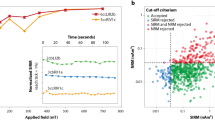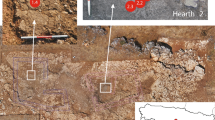Abstract
TWO recent contributions referring to the remanent magnetization of archæological material show the need for more experiments. Elsasser, Ney and Winckler raised doubts about the accuracy of dating by radiocarbon1. Their argument was that radiocarbon is formed by the action of cosmic rays; that this action is in part governed by the intensity of the Earth's magnetic field; that this intensity varies—very considerably according to Thellier's study of Roman bricks2,3; and that in consequence the initial activity of radiocarbon, from which the age of a specimen is deduced, must vary too. Atwater and Ellickson challenge the premise that Thellier's measurements are valid4. They suggest that incomplete combustion in ancient kilns might cause a reducing atmosphere in which the intensity of magnetization would be greatly increased.
Similar content being viewed by others
References
Elsasser, W., Ney, E. P., and Winckler, J. R., Nature, 178, 1226 (1956).
Thellier, E., C.R. Acad. Sci., Paris, 222, 905 (1946).
Thellier, E., C.R. Acad. Sci., Paris, 212, 281 (1941).
Atwater, H. A., and Ellickson, R. T., Nature, 181, 404 (1958).
Watson, F. J., Pottery Quarterly (in the press).
Author information
Authors and Affiliations
Rights and permissions
About this article
Cite this article
COOK, R. Intensity of Remanent Magnetization of Archæological Remains. Nature 181, 1421–1422 (1958). https://doi.org/10.1038/1811421c0
Issue Date:
DOI: https://doi.org/10.1038/1811421c0
- Springer Nature Limited
This article is cited by
-
On the intensity of the geomagnetic field in the permo-carboniferous derived from the thermo-remanence of cassiterite
Studia Geophysica et Geodaetica (1967)
-
Carbon-14 Activity during the past 5,000 Years
Nature (1958)





